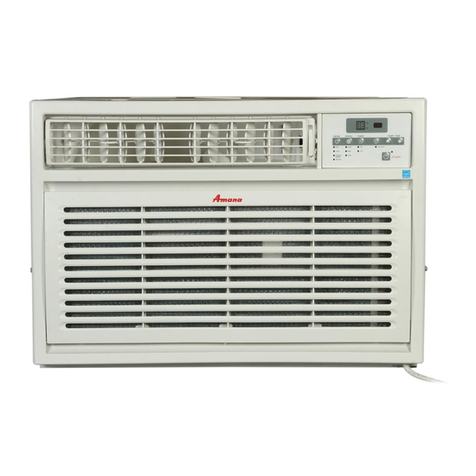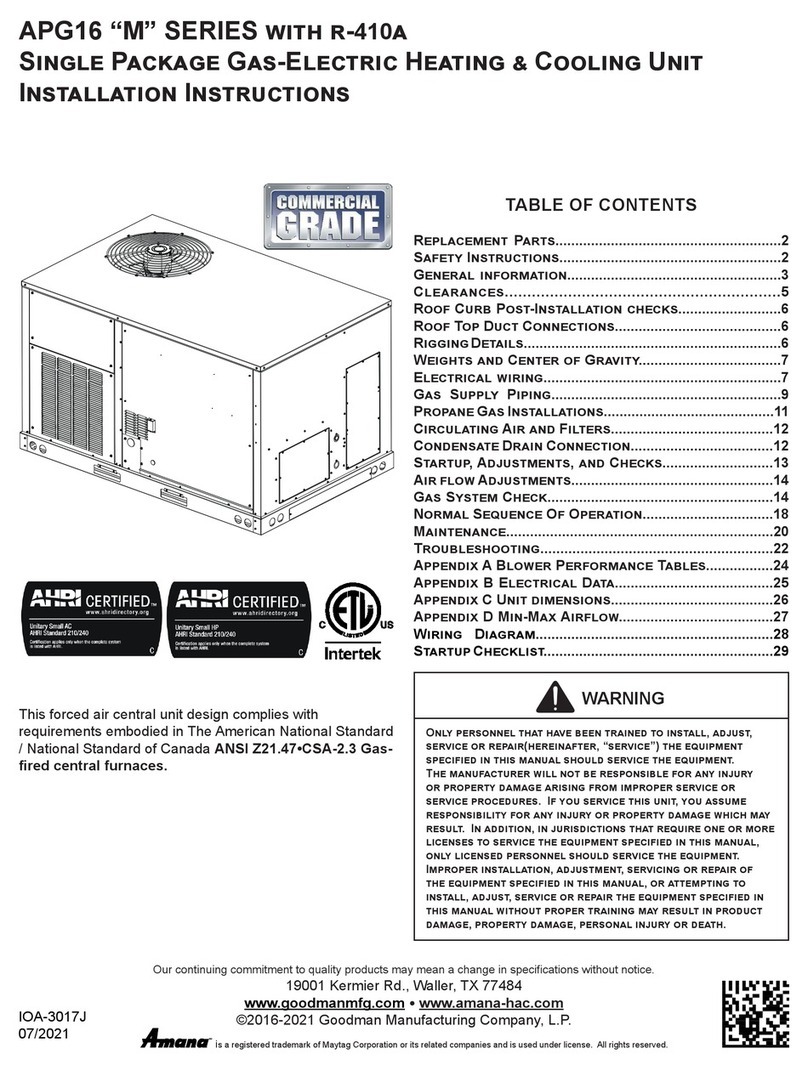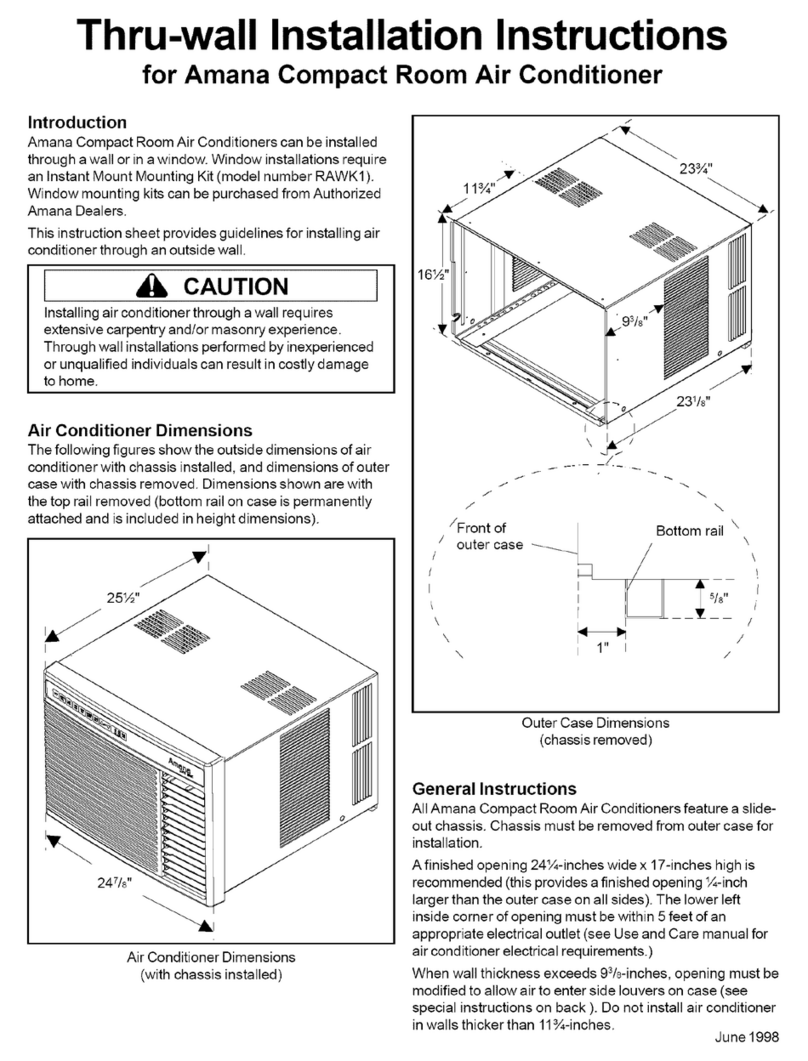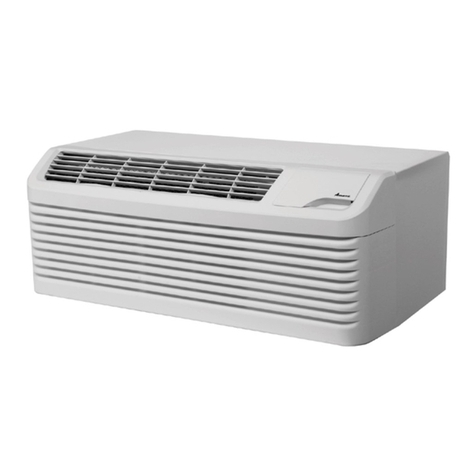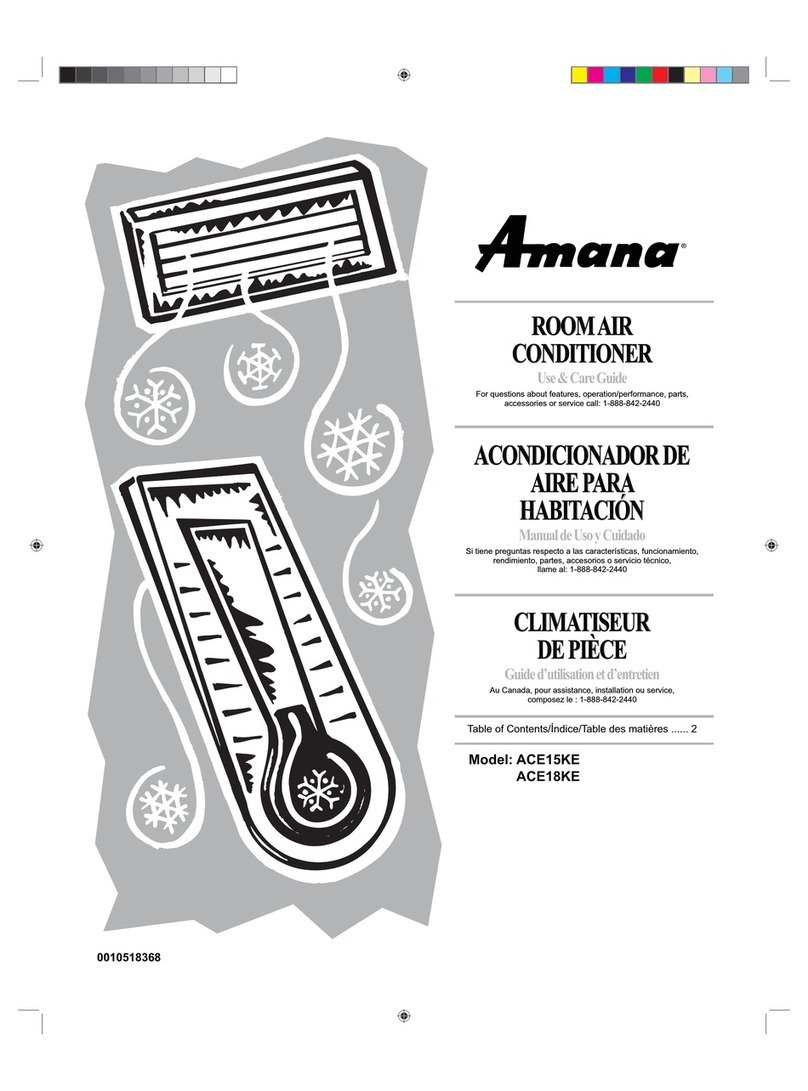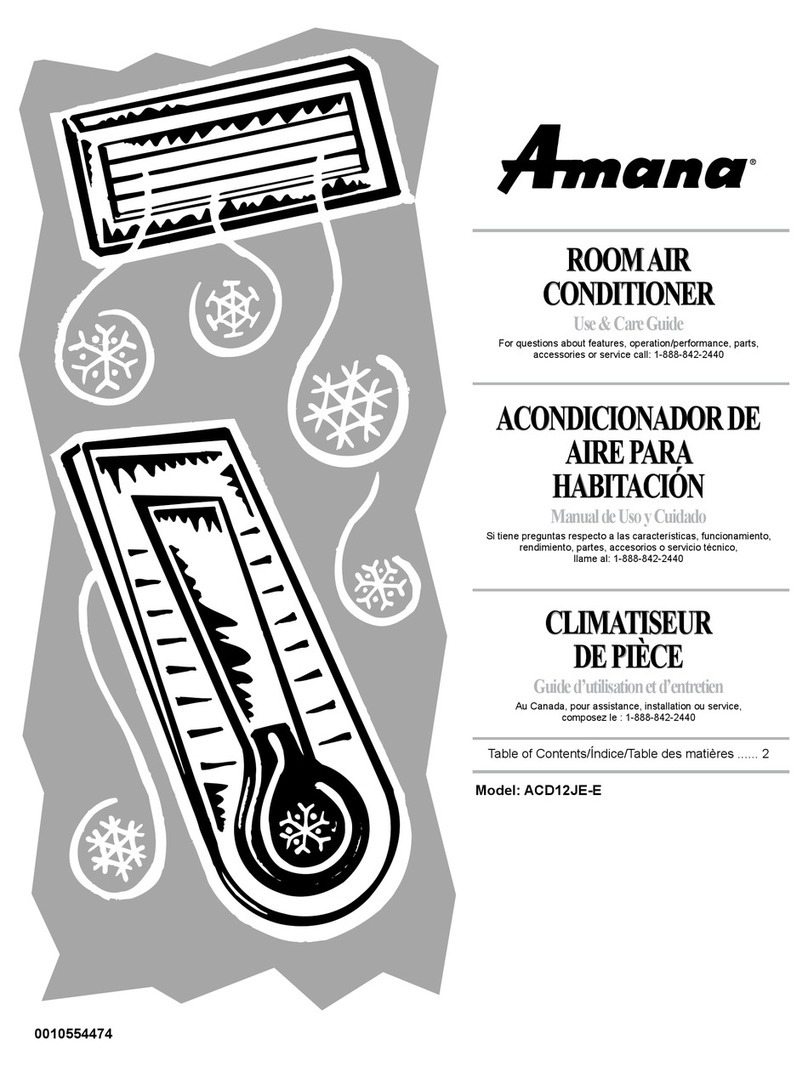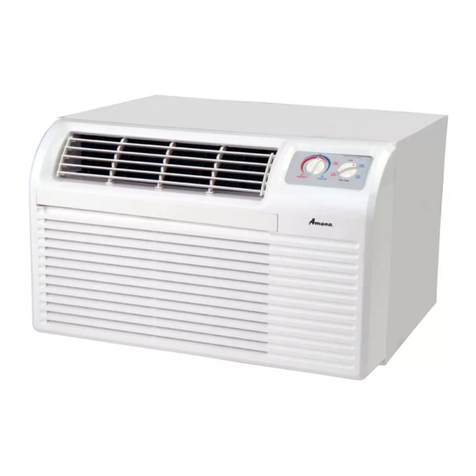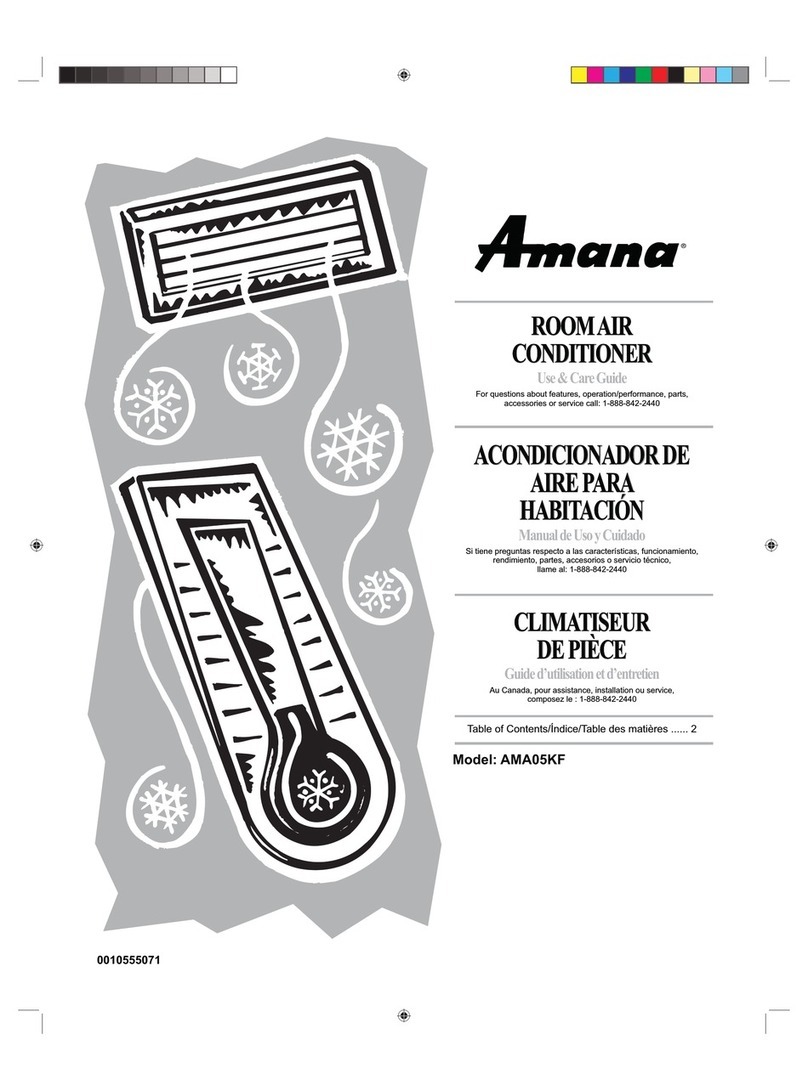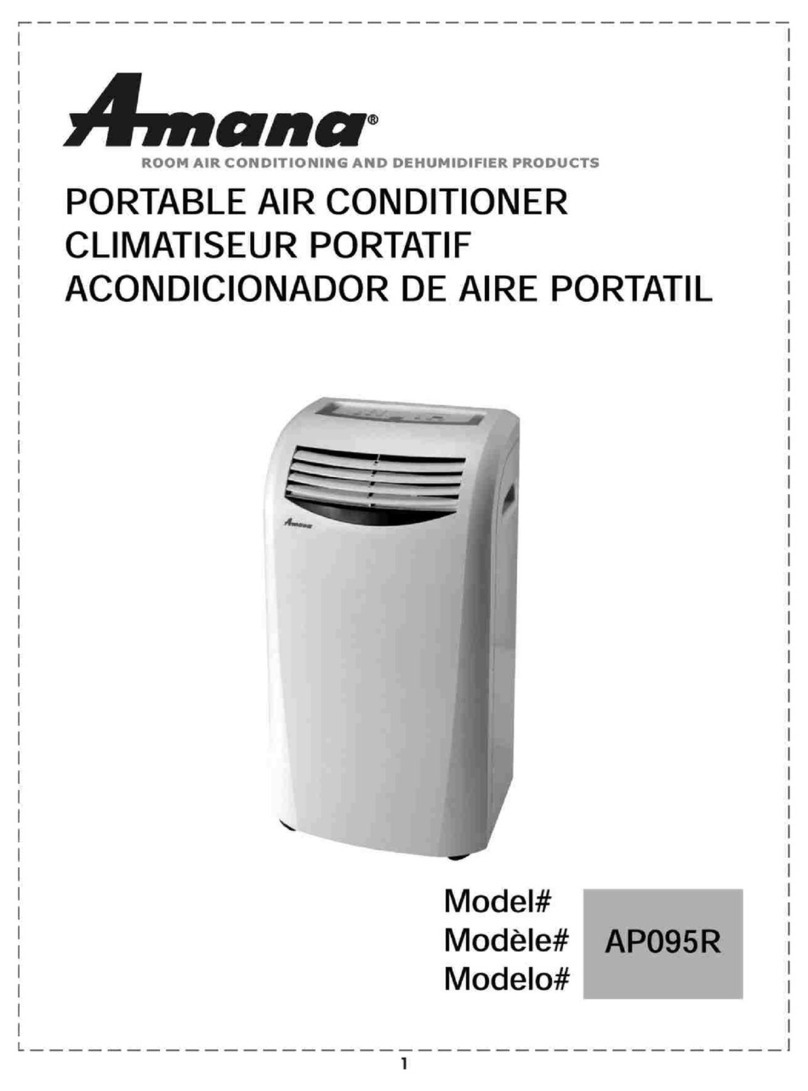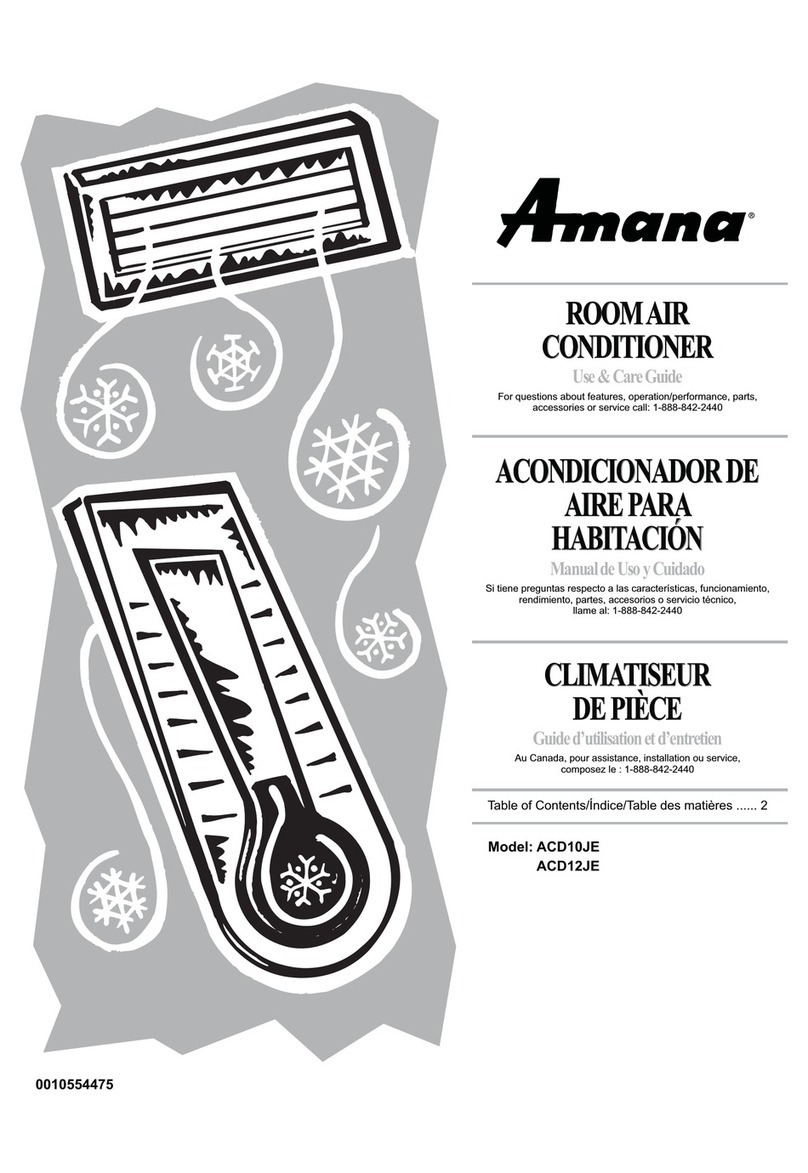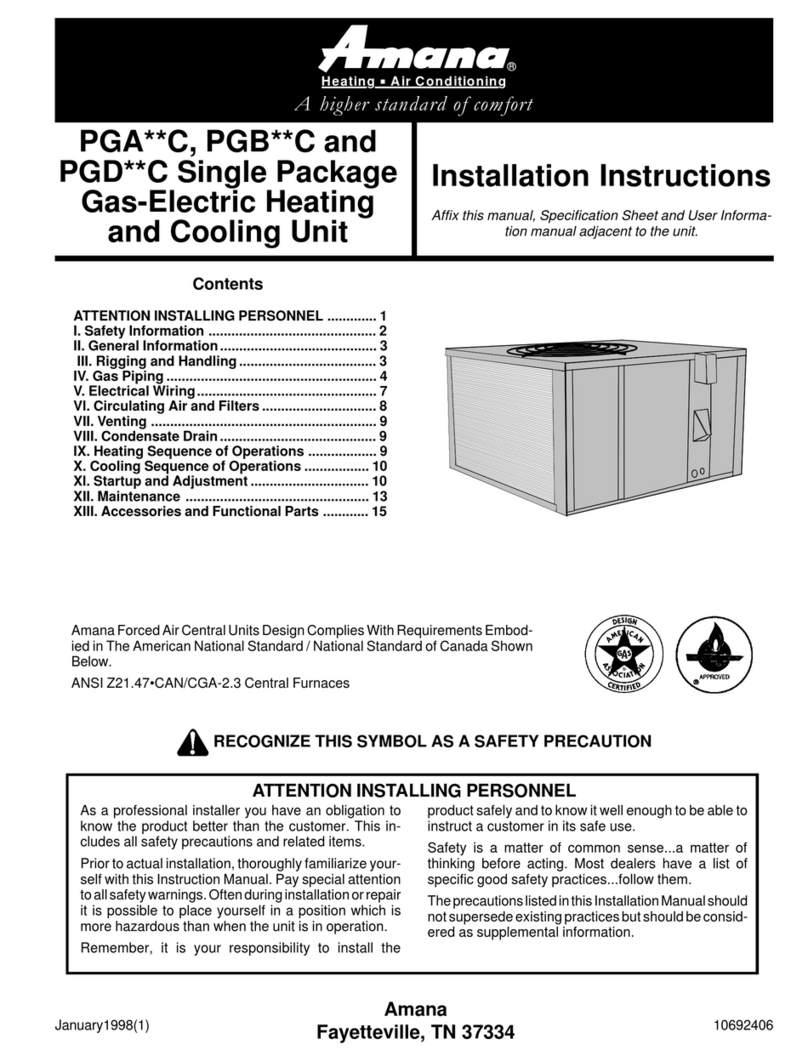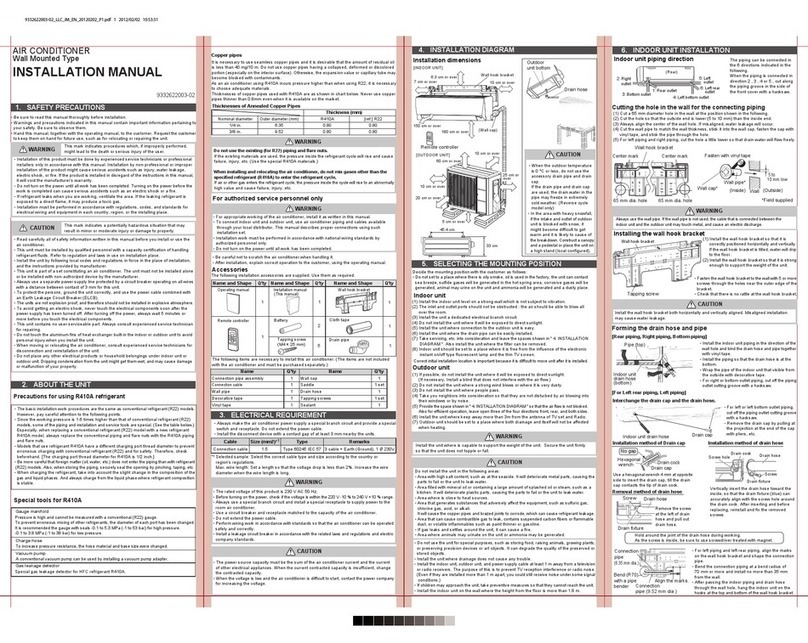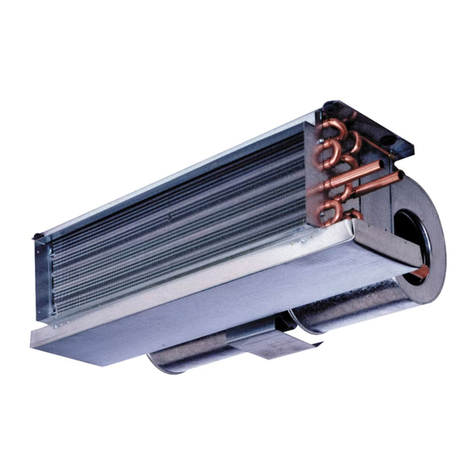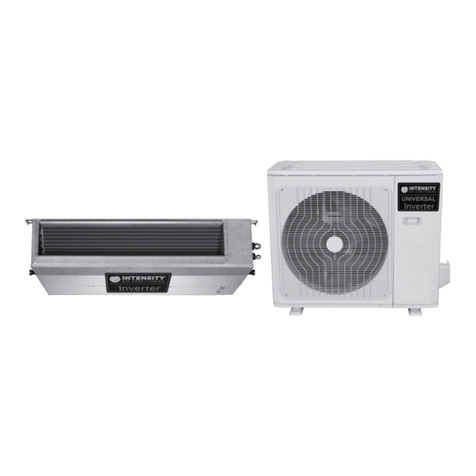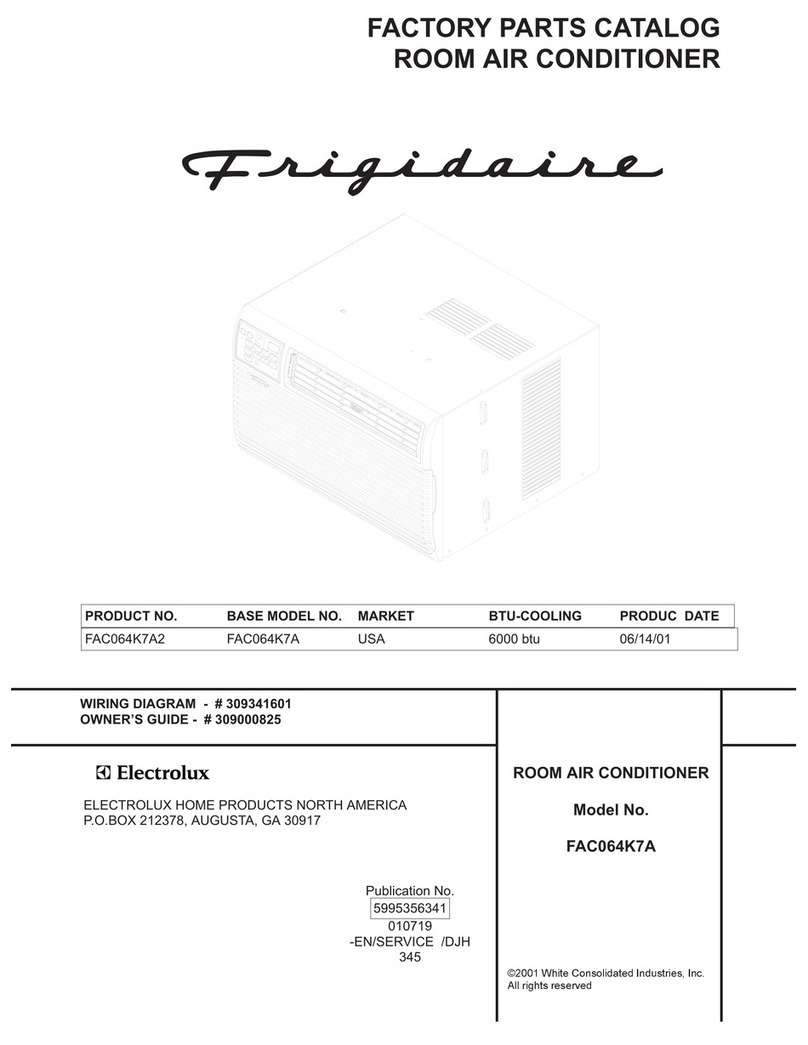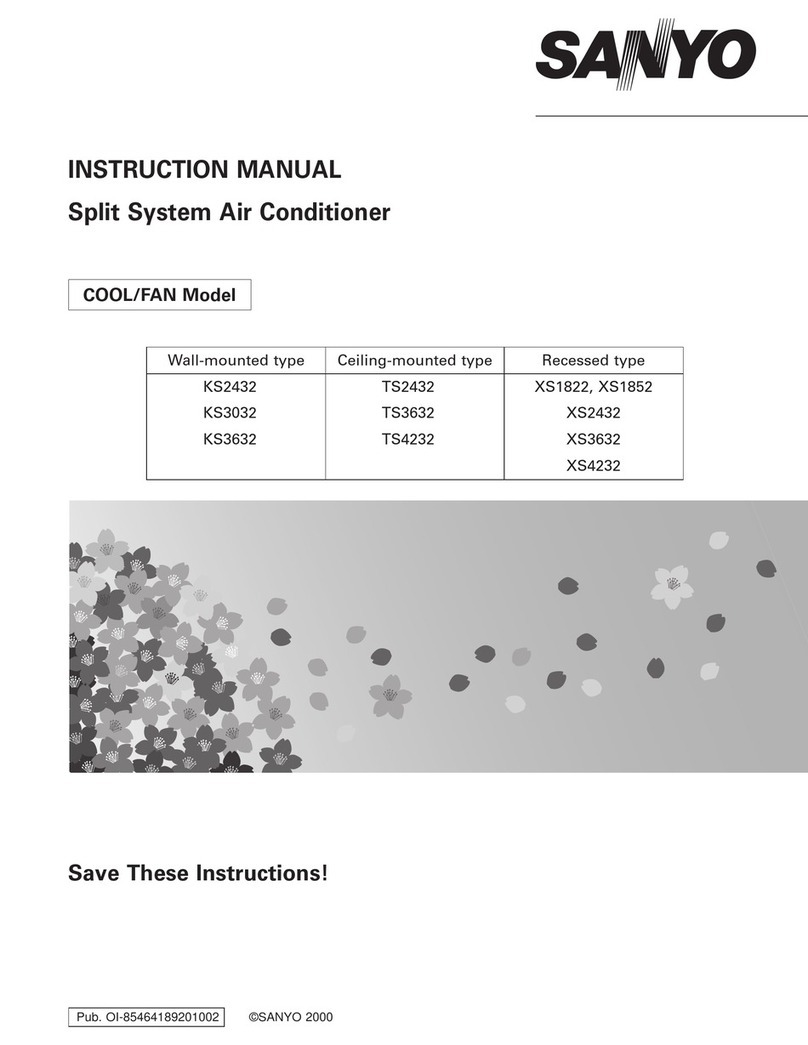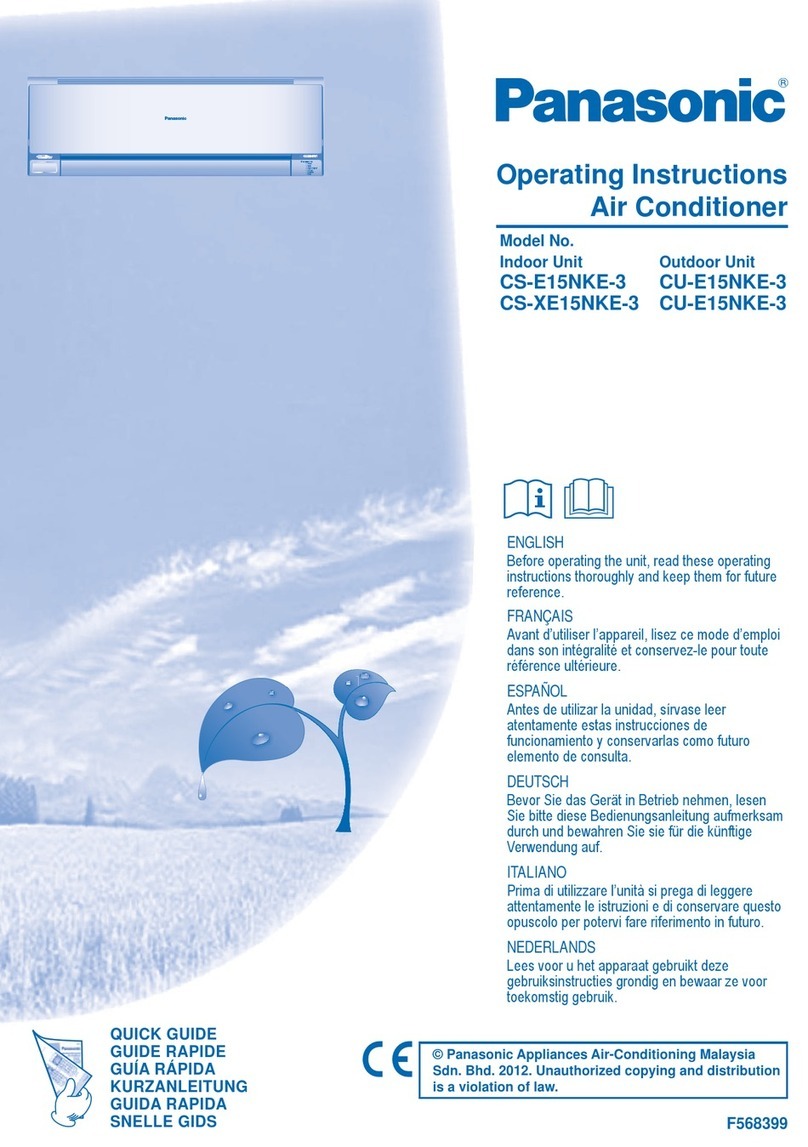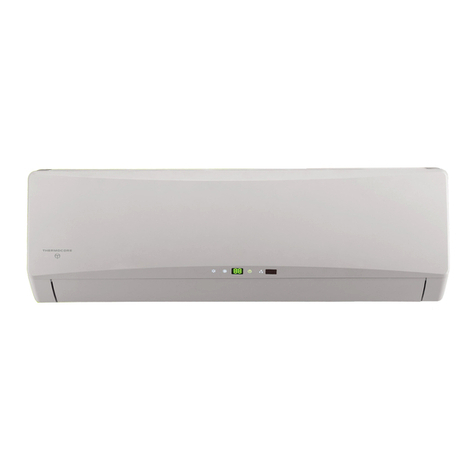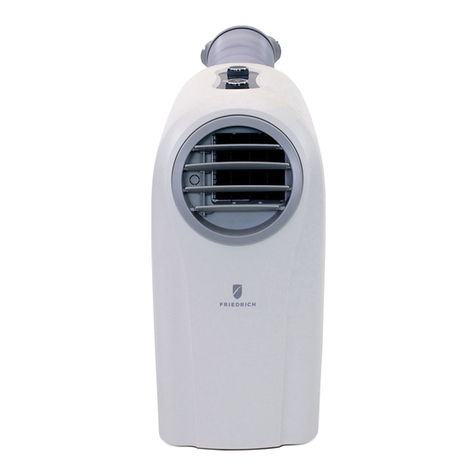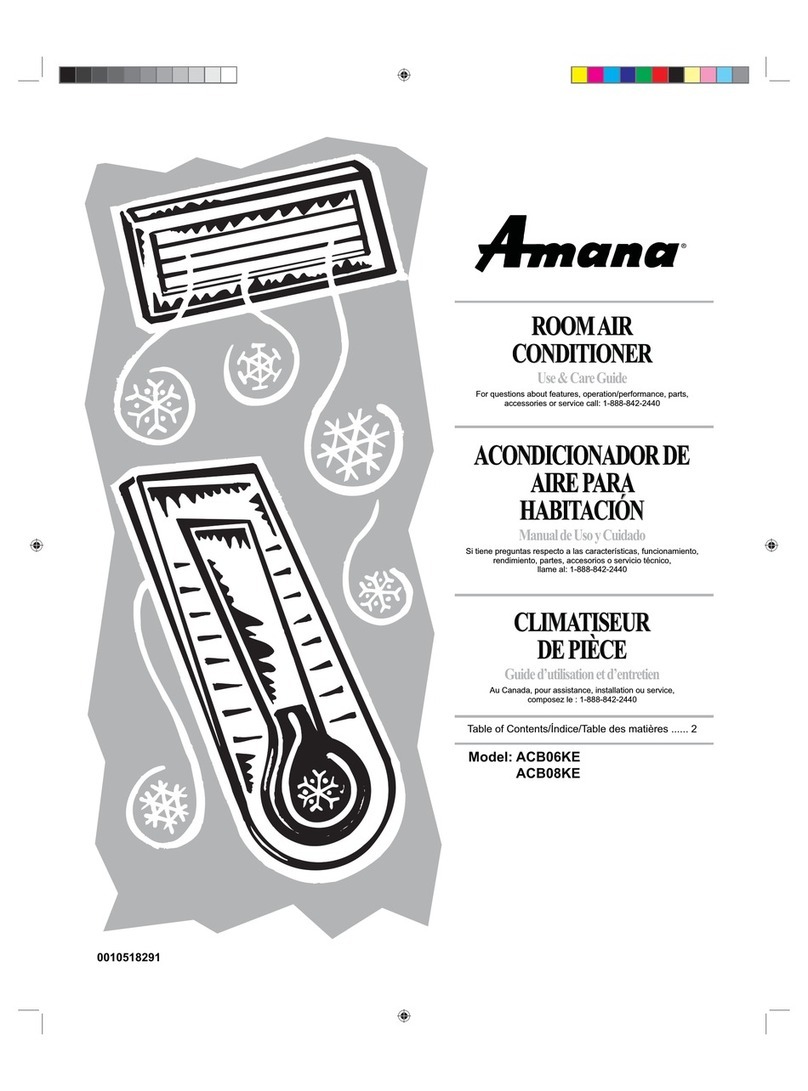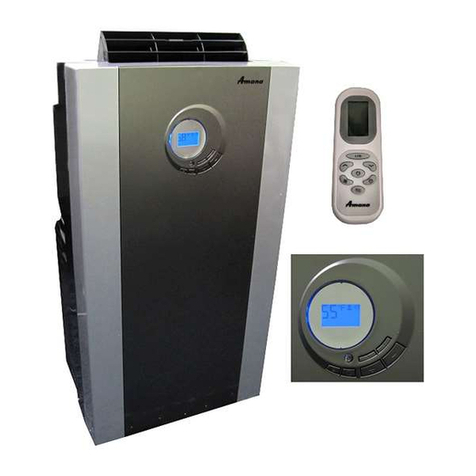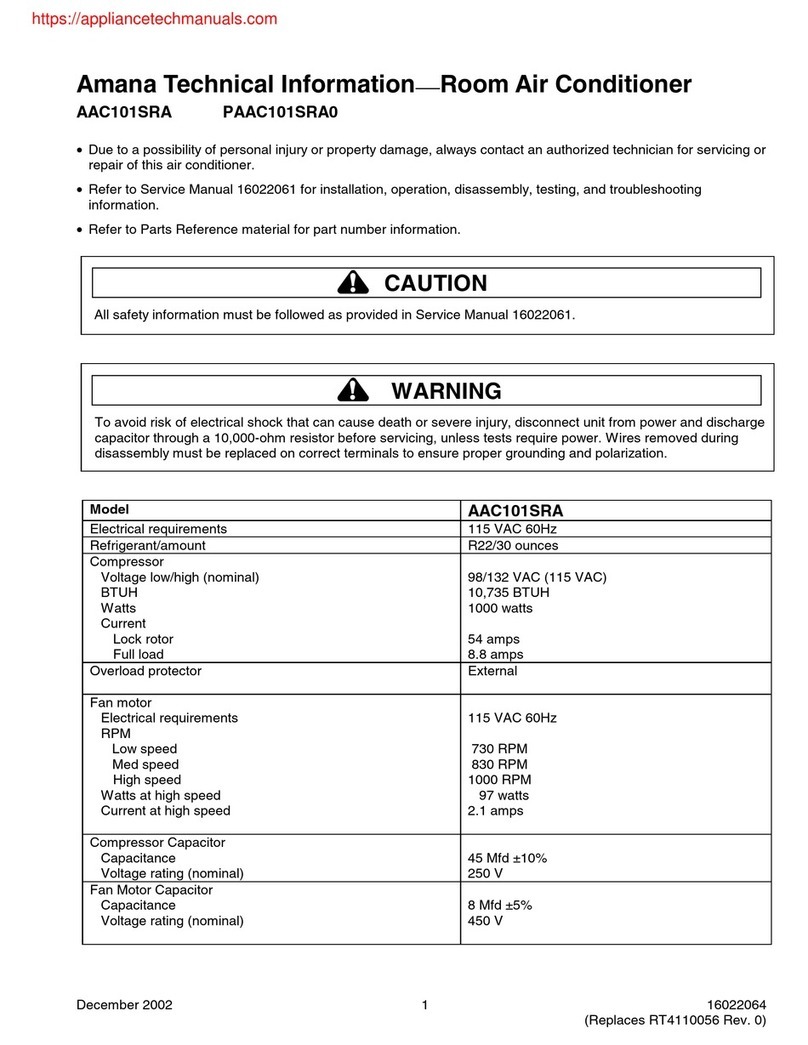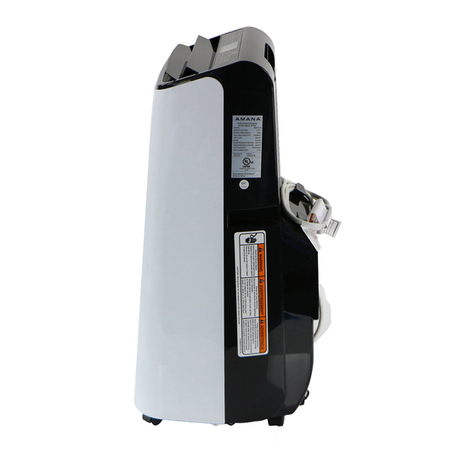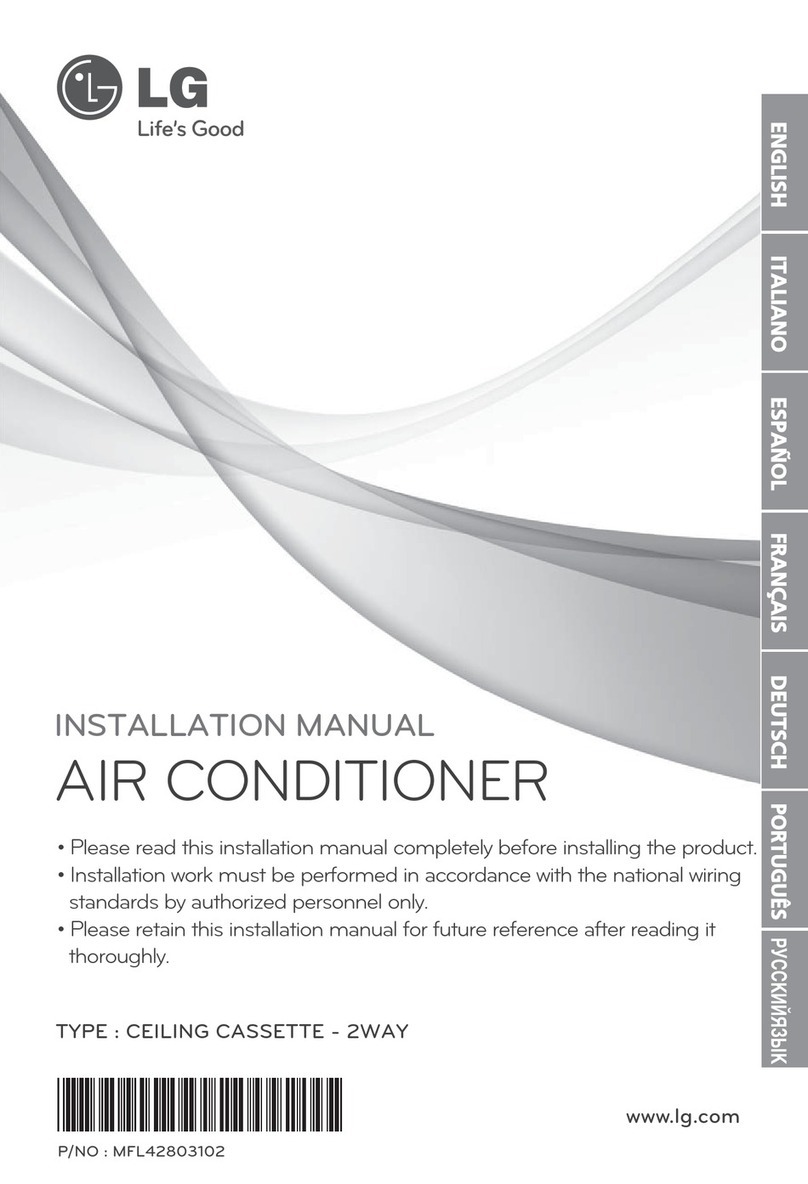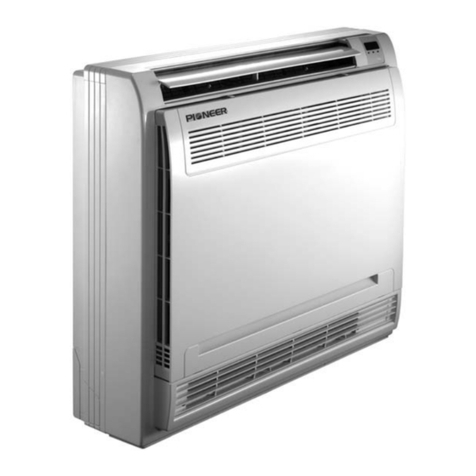
5
The successful development of hermetically sealed refrig-
erationcompressorshascompletelysealedthecompressor's
moving parts and electric motor inside a common housing,
minimizingrefrigerantleaksandthe hazards sometimes as-
sociated with moving belts, pulleys or couplings.
Fundamental to the design of hermetic compressors is a
methodwherebyelectricalcurrent is transmitted to thecom-
pressor motor through terminal conductors which pass
throughthe compressor housing wall. These terminalsare
sealedinadielectricmaterialwhichinsulatesthemfromthe
housingandmaintainsthe pressure tight integrityoftheher-
metic compressor. The terminals and their dielectric em-
bedmentare stronglyconstructed,butarevulnerabletocare-
lesscompressorinstallationormaintenanceprocedures and
equallyvulnerabletointernalelectricalshortcircuitscaused
by excessive system contaminants.
SAFE REFRIGERANT HANDLING
Whilethese items will notcoverevery conceivable situation, theyshould serve as a usefulguide.
In either of these instances, an electrical short between the
terminal and the compressor housing may result in the loss
of integrity between the terminal and its dielectric embed-
ment. This loss may cause the terminals to be expelled,
therebyventingthevaporousandliquidcontents of the com-
pressor housing and system.
Aventingcompressorterminalnormallypresentsnodanger
toanyone,providingtheterminalprotectivecover is properly
in place.
If, however, the terminal protective cover is not properly in
place,aventingterminal may discharge a combinationof
(a) hotlubricating oil and refrigerant
(b) flammable mixture (if system is contaminated
withair)
in a stream of spray which may be dangerous to anyone in
the vicinity. Death or serious bodily injury could occur.
Undernocircumstancesisahermeticcompressor tobeelec-
tricallyenergizedand/or operatedwithouthavingthe terminal
protectivecoverproperlyinplace.
SeeServiceSectionS-17forproperservicing.
IMPORTANT INFORMATION
WARNING
REFRIGERANTS ARE HEAVIER THAN AIR. THEY CAN "PUSH OUT" THE
OXYGEN IN YOUR LUNGS OR IN ANY ENCLOSED SPACE. TO AVOID
POSSIBLE DIFFICULTY IN BREATHING OR DEATH:
•NEVER PURGE REFRIGERANT INTO AN ENCLOSED ROOM OR SPACE. BY
LAW, ALL REFRIGERANTS MUST BE RECLAIMED.
•IF AN INDOOR LEAK IS SUSPECTED, THOROUGHLY VENTILATE THE AREA
BEFORE BEGINNING WORK.
•LIQUID REFRIGERANT CAN BE VERY COLD. TO AVOID POSSIBLE FROST-
BITE OR BLINDNESS, AVOID CONTACT WITH REFRIGERANT AND WEAR
GLOVES AND GOGGLES. IF LIQUID REFRIGERANT DOES CONTACT YOUR
SKIN OR EYES, SEEK MEDICAL HELP IMMEDIATELY.
•ALWAYS FOLLOW EPA REGULATIONS. NEVER BURN REFRIGERANT,
AS POISONOUS GAS WILL BE PRODUCED.
WARNING
SYSTEM CONTAMINANTS, IMPROPER SERVICE PROCEDURE AND/OR PHYSICAL
ABUSE AFFECTING HERMETIC COMPRESSOR ELECTRICAL TERMINALS MAY
CAUSE DANGEROUS SYSTEM VENTING.
WARNING
TO AVOID POSSIBLE INJURY, EXPLOSION OR DEATH, PRACTICE SAFE
HANDLING OF REFRIGERANTS.
WARNING
TO AVOID POSSIBLE EXPLOSION, USE ONLY RETURNABLE (NOT DISPOSABLE)
SERVICE CYLINDERS WHEN REMOVING REFRIGERANT FROM A SYSTEM.
• ENSURE THE CYLINDER IS FREE OF DAMAGE WHICH COULD LEAD TO A
LEAK OR EXPLOSION.
• ENSURE THE HYDROSTATIC TEST DATE DOES NOT EXCEED 5 YEARS.
• ENSURE THE PRESSURE RATING MEETS OR EXCEEDS 400 LBS.
WHEN IN DOUBT, DO NOT USE CYLINDER.
WARNING
TO AVOID POSSIBLE EXPLOSION:
• NEVER APPLY FLAME OR STEAM TO A REFRIGERANT CYLINDER. IF YOU
MUST HEAT A CYLINDER FOR FASTER CHARGING, PARTIALLY IMMERSE
IT IN WARM WATER.
• NEVER FILL A CYLINDER MORE THAN 80% FULL OF LIQUID REFRIGERANT.
• NEVER ADD ANYTHING OTHER THAN R-22 TO AN R-22 CYLINDER OR
R-410ATO AN R-410ACYLINDER. THE SERVICE EQUIPMENT USED MUST
BE LISTED OR CERTIFIED FOR THE TYPE OF REFRIGERANT USED.
• STORE CYLINDERS IN A COOL, DRY PLACE. NEVER USE A CYLINDER
AS A PLATFORM OR A ROLLER.


